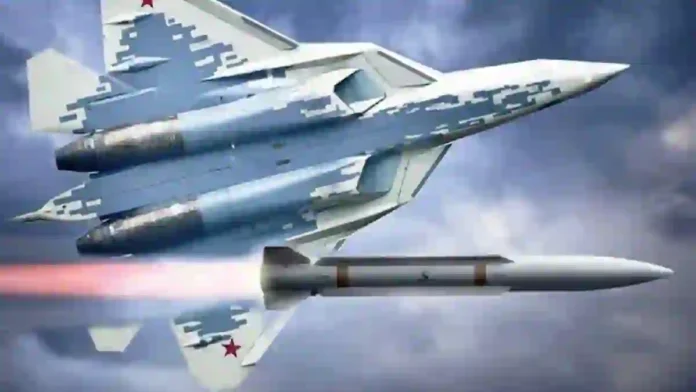Russia has significantly stepped up its Su‑57E pitch to India, offering a multi‑layered proposal that goes beyond sales to include evaluation access, industrial participation and localised production.
In a renewed diplomatic and industrial outreach, Moscow has invited Indian Air Force (IAF) test pilots to undertake evaluation flights of the export variant Su‑57E, an unusual openness meant to demonstrate confidence in the platform’s maturity and relevance.
Read- Pakistan Says Its Nuclear Program Can Be Made Available To Saudi Arabia Under Defence Pact
The move coincides with plans to send a Russian technical delegation to HAL’s Nashik facility—India’s long‑standing hub for licensed assembly of MiG and Sukhoi fighters—marking that Russia is prepared to leverage existing production ecosystems to create a new assembly or customisation line for the fifth‑generation platform.
To sweeten the offer, Russia has reiterated promises of technology transfer, local assembly, and even the use of India as a regional production and support hub for Su‑57E, a pitch intended to align with India’s long‑term self‑reliance goals.
On the procurement side, Moscow is willing to tailor options between outright off‑the‑shelf deliveries of flyaway aircraft for urgent force accretions, and a phased localisation plan that would gradually embed production and systems integration capabilities in India.
Industry sources suggest this could translate into a hybrid structure where initial aircraft arrive in squadron service while Indian production facilities are ramped up for follow‑on batches.
Russia’s fresh push comes at a critical juncture as India weighs timelines for its MRFA (Multi‑Role Fighter Aircraft) competition and the AMCA (Advanced Medium Combat Aircraft) indigenous program.
Read- In Another Blow To India, US Revokes Sanctions Waiver On Iran’s Chabahar Port
Read- Will Saudi Arabia Attack India If India Strikes Pakistan Again
While MRFA remains bogged down in procedural delays and cost‑sensitive negotiations with Western OEMs, and AMCA is still entering its prototype stage, Russia is attempting to present Su‑57E as a quicker vector to field a stealth‑class capability.
The outreach also responds to India’s growing insistence on avoiding pure import dependency, framing the offer as an opportunity for India to not only bridge the fifth‑gen gap but also acquire industrial depth in stealth fighter technologies.
Strategically, the Russian offer represents Moscow’s determination to retain its foothold in India’s combat aircraft ecosystem amid intensifying Western competition and India’s preference for indigenous programs.
However, challenges remain: doubts about the Su‑57’s true maturity, concerns about sanctions exposure under CAATSA, and India’s carefully managed defence balance between Moscow and Western suppliers.
The Su‑57E push underscores Russia’s willingness to court India with unprecedented access, but the eventual decision will hinge on how the IAF views the aircraft’s operational credibility and whether the proposal fits within India’s broader fighter force‑structure roadmap that must reconcile MRFA choices, AMCA timelines, and long‑term fleet diversification risks.
The intensified courtship arrives against the backdrop of uncertain time-frames for MRFA finalisation and AMCA induction, creating potential space for interim fifth‑generation solutions. Russia is signalling urgency, casting the Su‑57E as both a stop‑gap enhancer and a strategic co‑development opportunity for India.
IDN (With Agency Inputs)
Agencies




